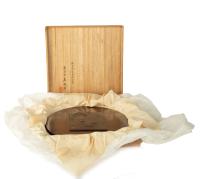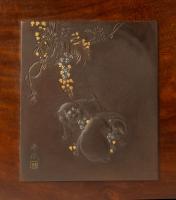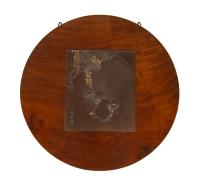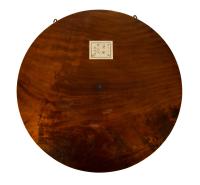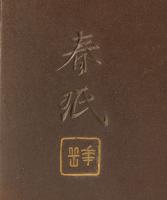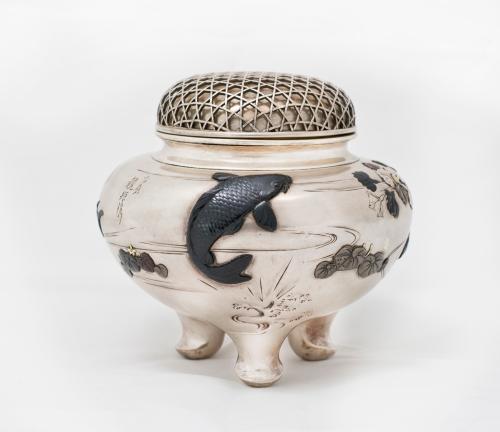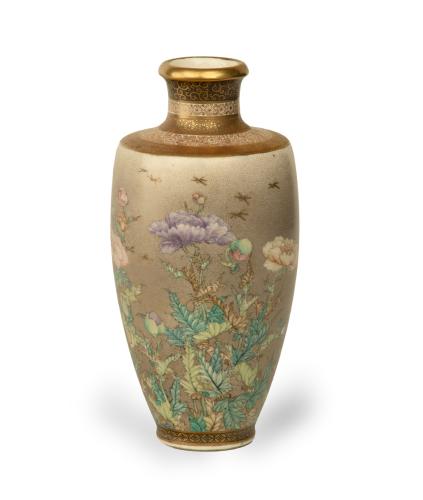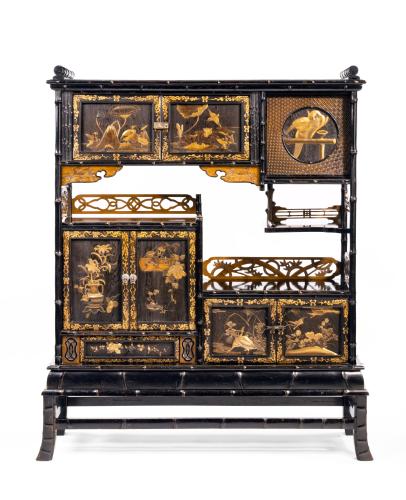
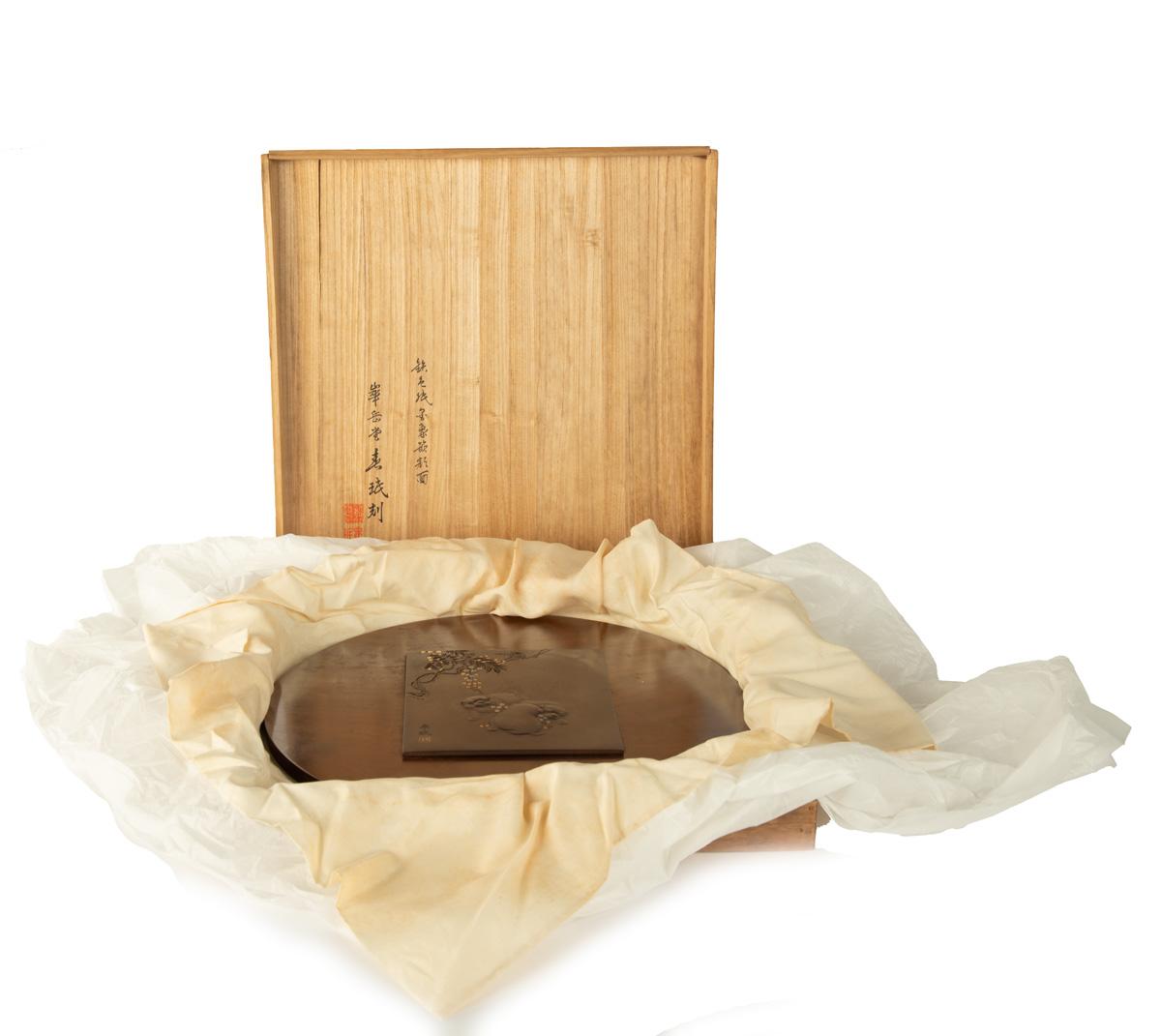
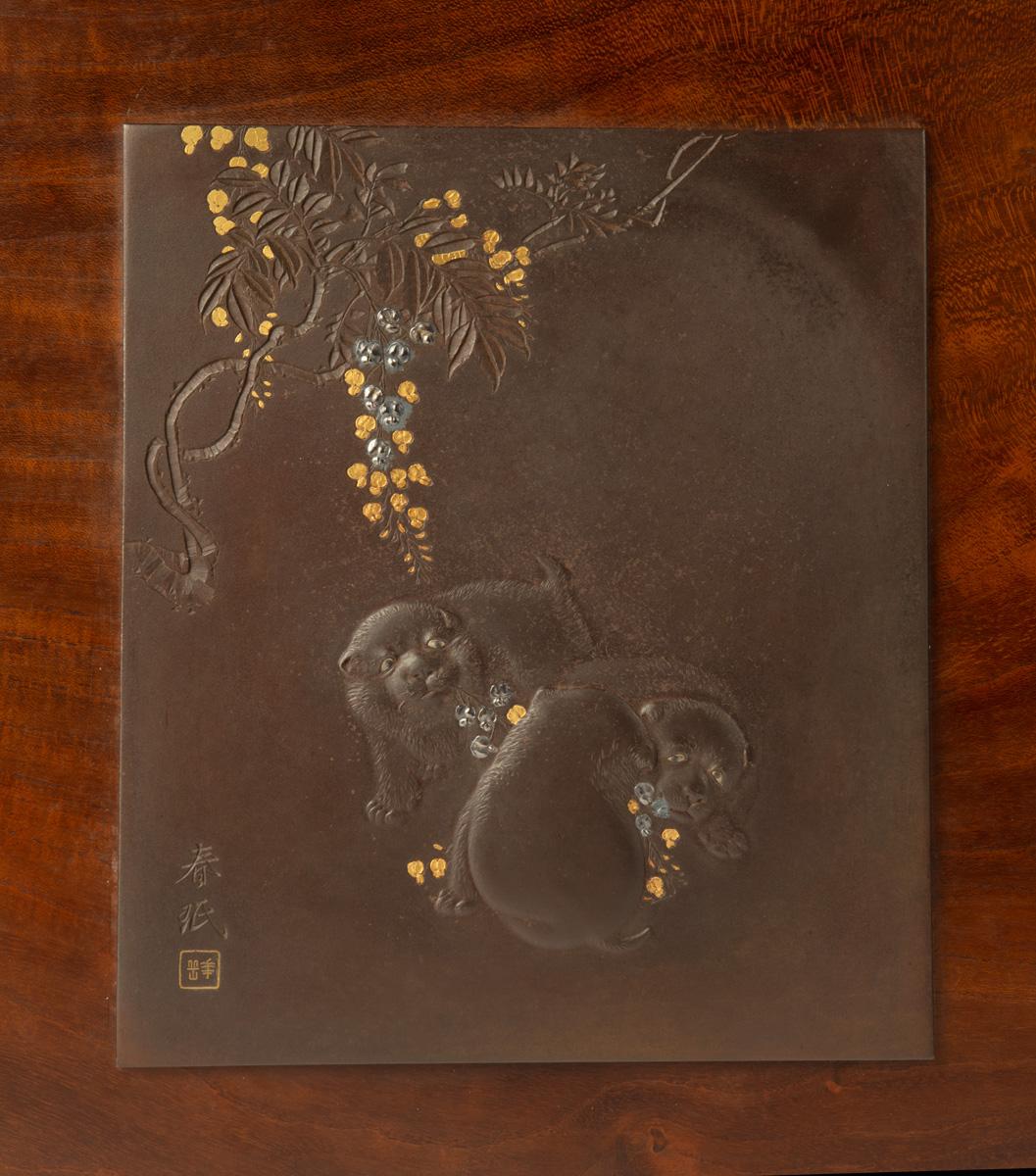
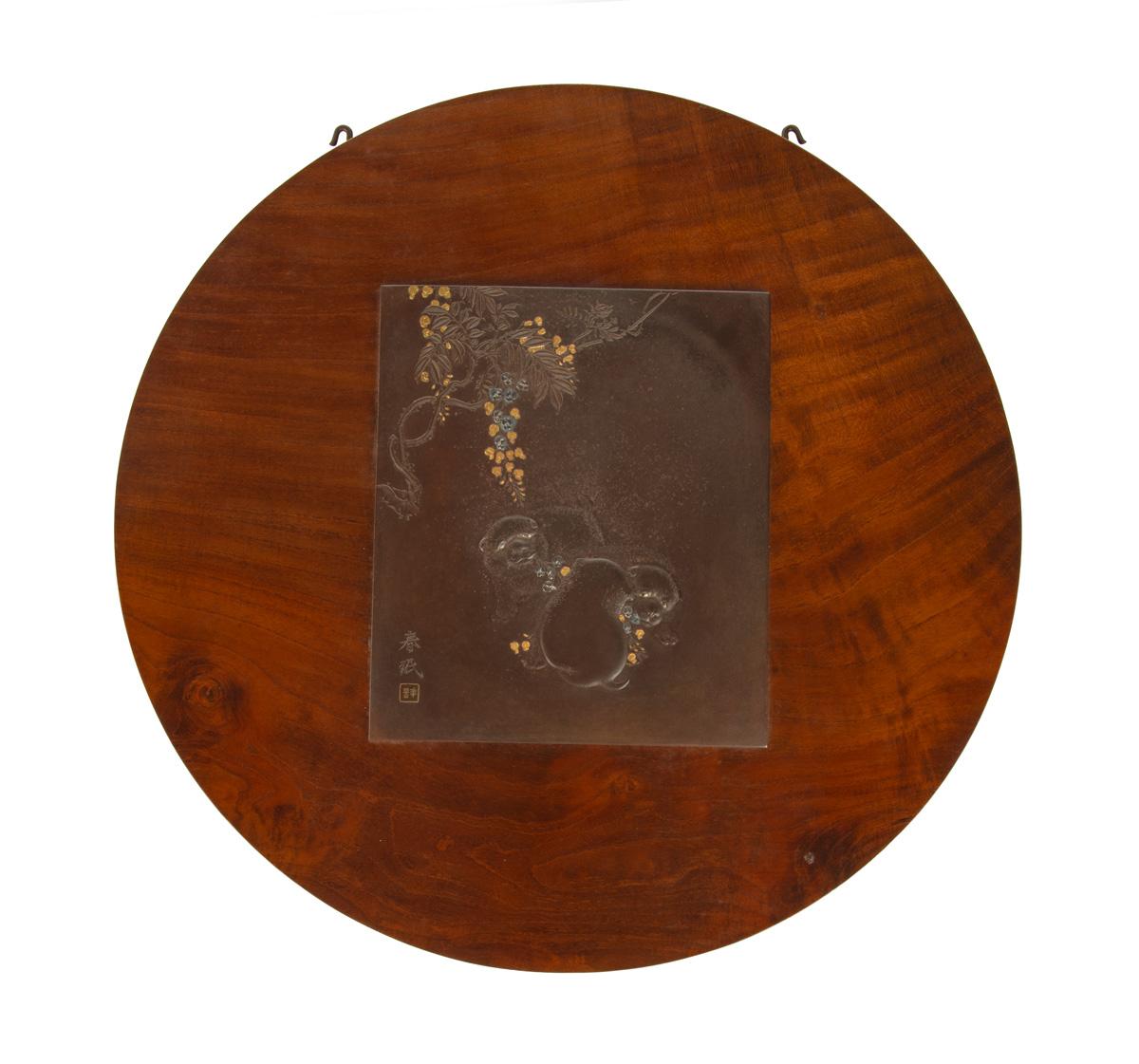
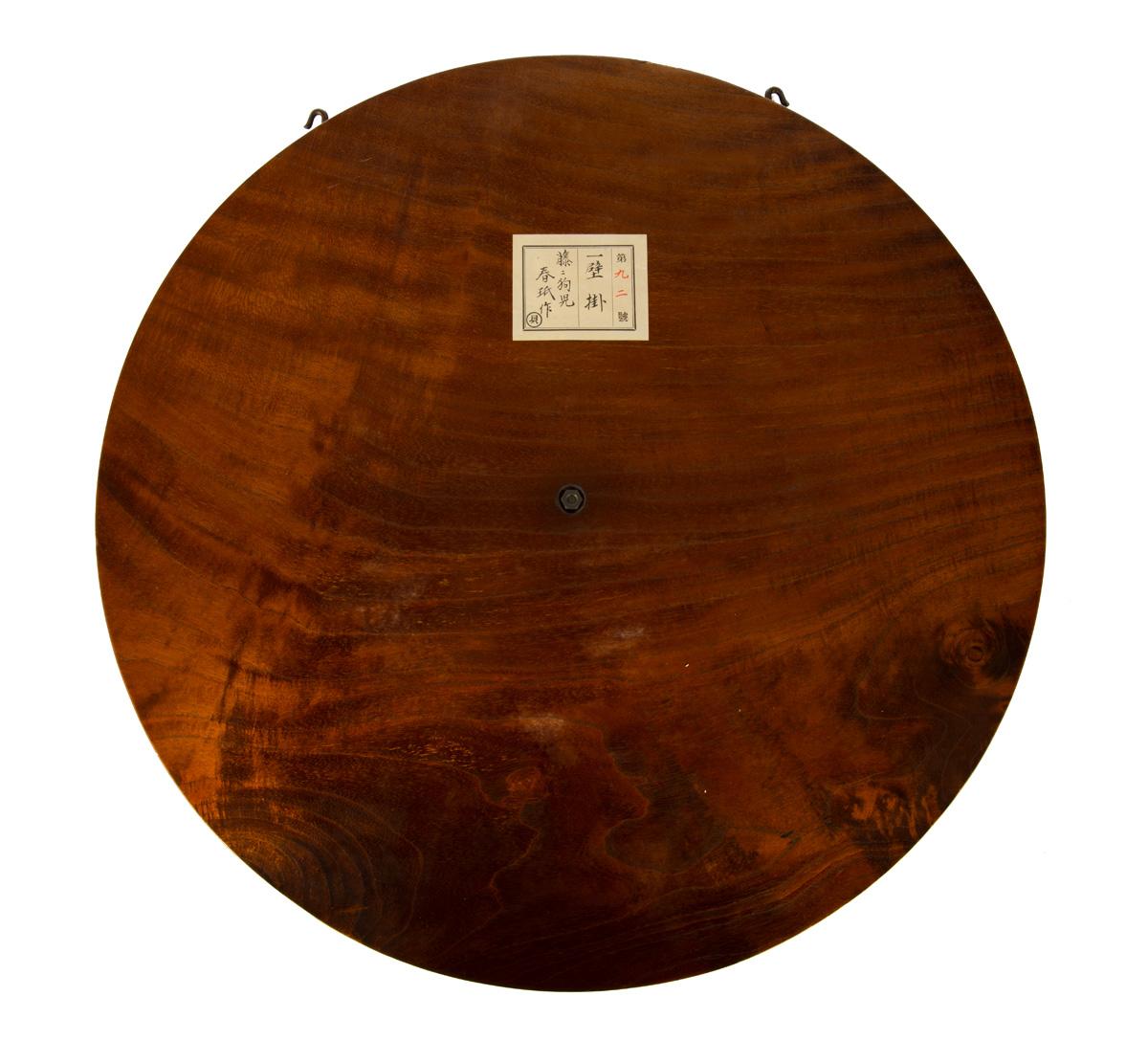
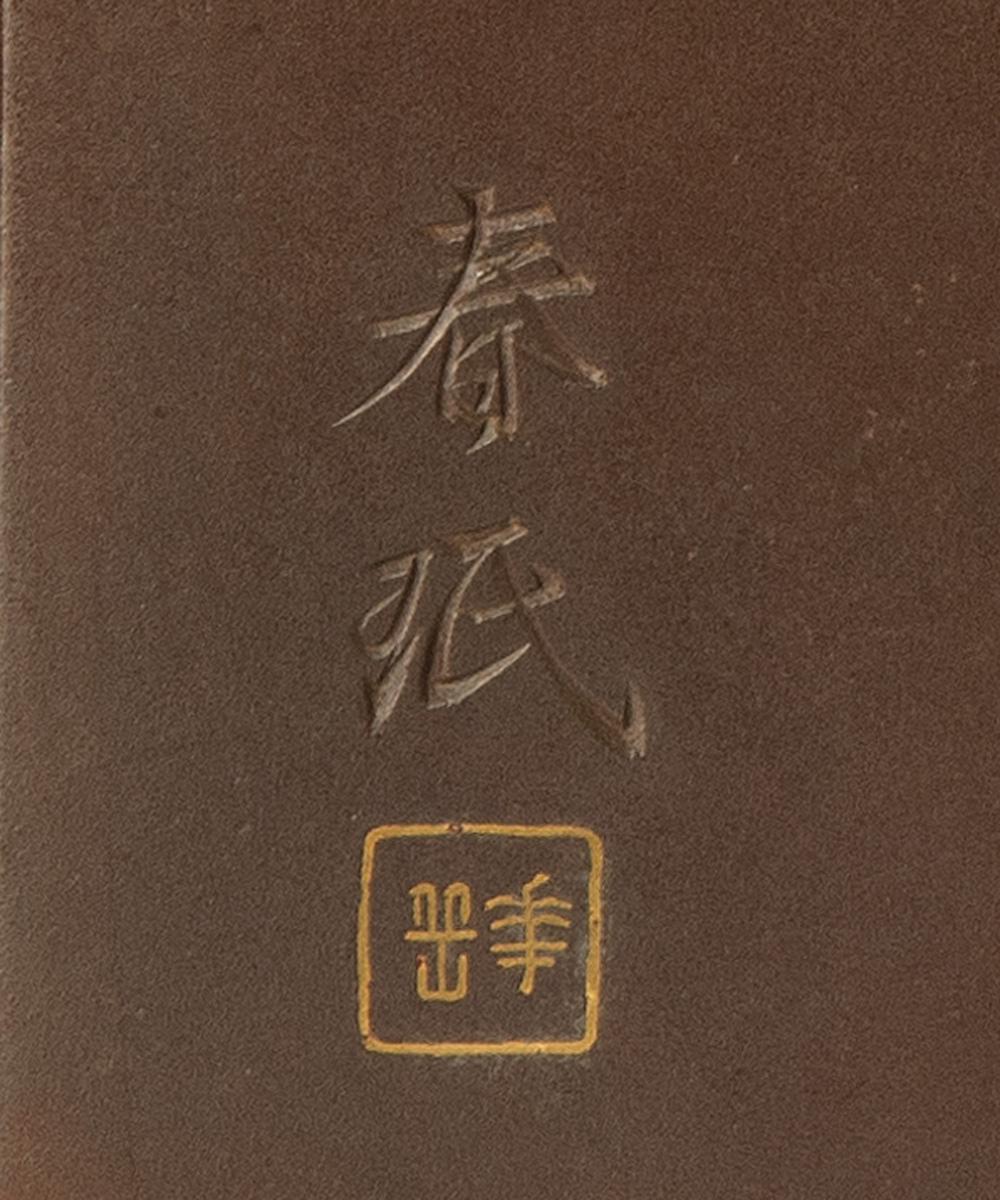
Price
£4800.00This object includes complimentary, Insured Shipping / Delivery within the UK
This object includes complimentary, International Insured Shipping
This object is eligible for a Certificate of BADA Provenance
The BADA Standard
- Since 1918, BADA has been the leading association for the antiques and fine art trade
- Members are elected for their knowledge, integrity and quality of stock
- Our clients are protected by BADA’s code of conduct
- Our dealers’ membership is reviewed and renewed annually
- Bada.org is a non-profit site: clients deal directly with members and they pay no hidden fees
Delightful Japanese Iron Panel of Puppies- Funakoshi Shunmin.
As part of our Japanese works of art collection we are delighted to offer this most charming late Meiji Period (1868-1912) circular wall panel upon which is housed an iron plaque depicting the most charming scene of mischievous puppies pulling wisteria from above, the artist Shunmin has painstakingly carved this iron panel in exquisite detail using a technique referred to as katakiri-bori , literally carving pictures with sharp chisels, the puppies are cast in low relief and are further highlighted with mixed metal eyes, the wisteria is picked out in gold and silver. The rectangular plaque is fitted to its original circular hardwood plaque, presumably a native cherry wood looking at the colour and grain, this circular panel then suspends on the two hooks as a wall decoration, artist signed and sealed to the front and comes complete within its original signed tomobako for safe storage and transportation.
Literature :
Artist Signed: Shunmin 春珉 with the seal 華岳 Kagaku.
Funakoshi Shunmin, a student of Ikeda Minkoku I and II, who made sword fittings, inro and other small items. The artist is listed in the Robert Haynes directory of metalworkers, he also has works recorded in the Wrangham collections as well as a mixed metal inro depicting a pheasant, housed within the collection of the British museum.
He was a metalwork specialist who worked in Chayamachi in the Shitaya district of Tokyo. He exhibited frequently at the national exhibitions, including at the 3rd Naikoku Kangyo Hakurankai (National Industrial Exposition) held in Tokyo in 1890. He showed at the World’s Columbian Exposition in Chicago in 1893, at the 4th Naikoku Kangyo Hakurankai in Kyoto in 1895, at the Exposition Universelle in Paris in 1900, at the 5th Naikoku Kangyo Hakurankai in Osaka in 1903, at the Louisiana Purchase Exposition in Saint Louis in 1904, and at the Japan-British Exhibition in London in 1910. Later in his life, he returned to the Japanese government-sponsored exhibitions with the Kaiso Teiten in the spring of 1936, followed by the 1st, 2nd, and the 3rd Shin-Bunten in 1937 – 1939, and finally at the Hoshukuten in 1940. At these late exhibitions he was accorded mukansa or non-vetted status in keeping with his high reputation and skill.
Provenance :
I purchased this most beautiful object in a gallery in Kyoto during my recent visit. I found the charming subject combined with the quality of the katakiri-bori carving just irresistible.
Approximate Sizes :
Panel Diameter : 16" 42 cm.
Plaque Height : 8 3/8" 20.7 cm.
Plaque Width : 7 1/4" 18.5 cm.
Free worldwide delivery and a certificate of authenticity are included within the price of this item.
Dimensions
Panel Diameter : 16" 42 cm Plaque Height : 8 3/8" 20.7 cm Plaque Width : 7 1/4" 18.5 cmPrice
£4800.00This object includes complimentary, Insured Shipping / Delivery within the UK
This object includes complimentary, International Insured Shipping
This object is eligible for a Certificate of BADA Provenance
Condition report
Good Condition Throughout.Stock number
EP84The BADA Standard
- Since 1918, BADA has been the leading association for the antiques and fine art trade
- Members are elected for their knowledge, integrity and quality of stock
- Our clients are protected by BADA’s code of conduct
- Our dealers’ membership is reviewed and renewed annually
- Bada.org is a non-profit site: clients deal directly with members and they pay no hidden fees


